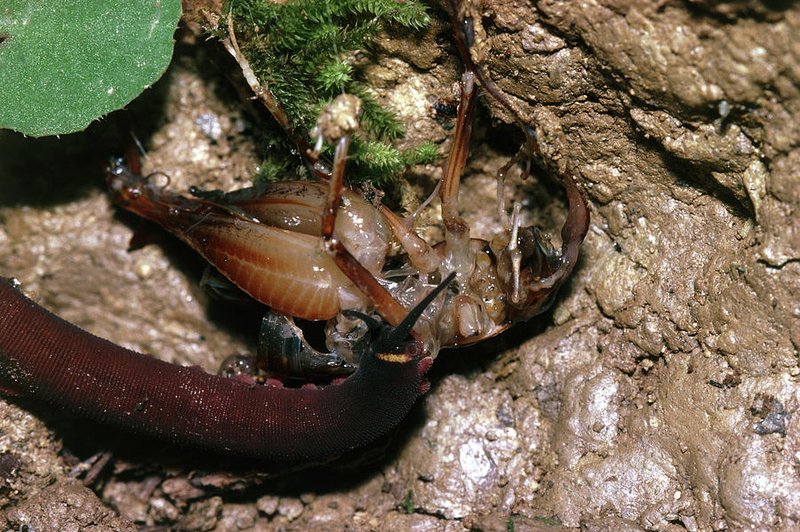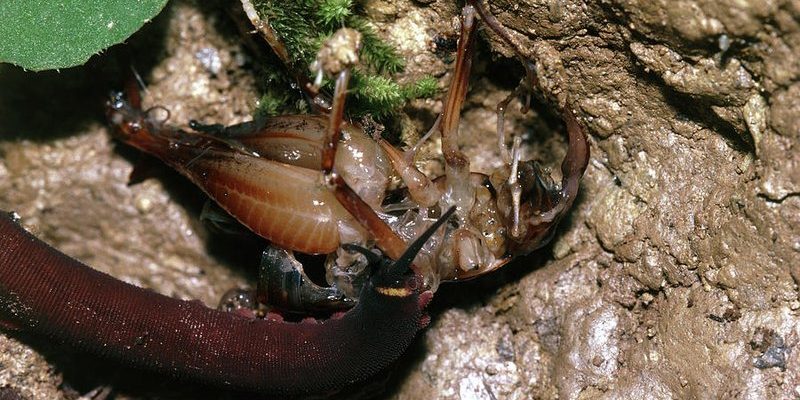
When it comes to feeding velvet worms in captivity, it’s essential to know their dietary needs. Just like you wouldn’t feed a dog chocolate or a cat onions, there are specific food items that are safe (and others that are not) for these little guys. Let’s dig deeper into the world of velvet worms and discover some safe prey options you can provide to keep your new friend happy and healthy.
Understanding Velvet Worms’ Diet
Velvet worms, also known as Onychophorans, are fascinating creatures that belong to a unique group of animals. They are neither insects nor worms but share features of both. In the wild, they typically hunt small insects and other arthropods using their remarkable slime-shooting technique. This method allows them to immobilize their prey before slurping it down. Fun, right?
To mimic their natural feeding habits in captivity, you need to provide them with similar prey options. Here’s the thing: they don’t eat just anything. It’s important to stick to insects and small invertebrates that match their size and nutritional needs. For instance, offering prey that’s too large could lead to difficulties in feeding, and feeding them inappropriate foods can lead to health issues.
Safe Prey Options for Velvet Worms
When thinking about what to feed your velvet worm, keep in mind that variety is key. Here are some *safe prey options* that are commonly recommended:
- Fruit Flies: These tiny insects are a staple in many exotic pet diets. They’re small, easy to catch, and packed with nutrients.
- Crickets: Small crickets can be a great option, too. They’re nutritious and mimic the natural diet of the velvet worm well.
- Mealworms: While a bit larger, mealworms can still be a suitable choice if cut into smaller pieces.
- Springtails: These tiny creatures are not only safe but also easy to culture at home.
- Black Soldier Fly Larvae: They offer a good balance of proteins and fats, making them another healthy choice.
Make sure to dust the insects with a *calcium supplement* to ensure your velvet worm gets all the nutrients it needs. Honestly, keeping a balanced diet will help your velvet worm thrive!
How to Feed Velvet Worms
Feeding velvet worms isn’t just about choosing the right prey; it’s also about how you present it. Here’s a simple approach to ensure a successful feeding experience:
1. Prepare the Prey: Before you introduce food to your velvet worm, make sure it’s appropriately sized. If you’re using crickets or mealworms, cut them down to a manageable size.
2. Introduce the Food: Gently place the prey in the enclosure. You might find that your velvet worm is initially shy about approaching the food. Don’t worry! They are like us when it comes to trying new things—sometimes they need a little nudge.
3. Observe the Feeding: It’s fascinating to watch as they use their slime to catch their meal! If the prey is too large or your velvet worm seems uninterested, remove the food after a couple of hours to prevent spoilage.
4. Clean Up: After your velvet worm has finished its meal, be sure to clean any uneaten prey to maintain a healthy habitat.
Feeding can be one of the most enjoyable parts of caring for a velvet worm. Just think of it as a mini show every time!
Common Mistakes in Feeding Velvet Worms
Even experienced pet owners can slip up when it comes to feeding. Here are some common mistakes you might want to avoid:
– Overfeeding: It’s easy to think that more is better, but velvet worms can suffer from obesity if fed too frequently or in large quantities.
– Improper Food Size: Providing prey that’s too big can stress your velvet worm. Stick with smaller-sized insects!
– Not Cleaning Up: Uneaten food can lead to mold or bacteria growth in the enclosure. Make a habit of checking for leftovers.
Here’s the thing: it’s all about balance. By being attentive to their needs, you’ll create a healthier, happier environment for your velvet worm.
Where to Source Prey
Finding safe prey for your velvet worm doesn’t have to be challenging. Here are a few options to consider:
1. Local Pet Stores: Many pet shops carry a range of live food options, such as crickets and fruit flies, making it easy to stock up.
2. Online Suppliers: Look for reputable online retailers specializing in exotic pet supplies. They often have a variety of insects and can ship them directly to your door.
3. Culturing Your Own Food: If you’re feeling adventurous, you can breed your own insects, such as fruit flies or mealworms. This way, you’ll always have a fresh supply of food on hand!
Whatever option you choose, prioritize sourcing from reputable places to ensure the insects are healthy and free from pesticides.
Feeding velvet worms in captivity can be a rewarding experience as you observe their unique hunting behaviors and ensure they are well-fed. With the right knowledge and a bit of practice, it becomes second nature. Remember to offer a variety of safe prey options and always keep an eye on their feeding habits.
As you venture into the world of caring for these extraordinary creatures, it’s essential to remember that every meal is an opportunity to connect with them. Enjoy the journey as you learn about velvet worms and the many ways to keep them healthy and happy!

